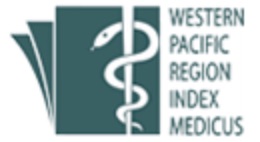Prevalence, clinical features and factors associated with psychosis among Idiopathic Parkinson’s Disease (IPD) patients in Universiti Kebangsaan Malaysia Medical Centre (UKMMC)
DOI:
https://doi.org/10.31436/imjm.v15i1.1389Abstract
Introduction: This was a cross sectional study of the prevalence of psychosis and its characteristic in patients with Idiopathic PD (IPD) attending the neurology clinic, Pusat Perubatan Universiti Kebangsaan Malaysia (PPUKM). Methods: The assessment was using a structured demographic data and clinical information questionnaire, Mini-International Neuropsychiatric Interview (MINI) 6.0.0, Starkstein’s Apathy Scale (AS), Mini Mental State Examination (MMSE), Movement Disorder Society – Unified Parkinson Disease Rating Scale (MDS-UPDRS) Q1-Q6, Hoehn and Yahr (H&Y) stages of PD and Schwab and England Activities of Daily Living (ADL) scale. Results: 112 patients were studied. Psychosis was identified in 39 (34.8 %) patients (33 patients with hallucination only, 6 with hallucination and delusion (psychotic disorder) and none with delusions only). Among patients experiencing hallucinations, 14 (35.9%) had a visual hallucination only, 12 (30.8%) had auditory hallucinations only, and 13 (33.3%) had both visual and auditory hallucinations. Psychosis were more common in IPD patients with cognitive impairment using MDSQ1 scoring (OR 0.15; 95% CI, 0.05-0.63; P = p‹0.05) while others variables were not significant. The analysis, among patients with psychotic symptoms only and patients with psychotic disorder showed education level (p<0.05), duration of illness (OR 1.8; 95% CI, (-10.7 - -3.5; p <0.01), cognitive impairment score - MDSQ1 (OR 0.2; 95% CI, 0.2-0.9; p<0.01), H&Y score (OR 0.4; 95% CI, -2.1- -0.6; p<0.01) and ADL score (OR 0.6; 95% CI, 0.3 – 2.6; p<0.05) were significant. Conclusions: Lower education level, longer duration of illness, more advance stage of Parkinson disease and less functioning in ADL were significant in psychotic disorder in IPD.
Downloads
Downloads
Published
How to Cite
Issue
Section
License
All material submitted for publication is assumed to be submitted exclusively to the IIUM Medical Journal Malaysia (IMJM) unless the contrary is stated. Manuscript decisions are based on a double-blinded peer review process. The Editor retains the right to determine the style and if necessary, edit and shorten any material accepted for publication.
IMJM retain copyright to all the articles published in the journal. All final ‘proof’ submissions must be accompanied by a completed Copyright Assignment Form, duly signed by all authors. The author(s) or copyright owner(s) irrevocably grant(s) to any third party, in advance and in perpetuity, the right to use, reproduce or disseminate the research article in its entirety or in part, in any format or medium, provided that no substantive errors are introduced in the process, proper attribution of authorship and correct citation details are given, and that the bibliographic details are not changed. If the article is reproduced or disseminated in part, this must be clearly and unequivocally indicated.










